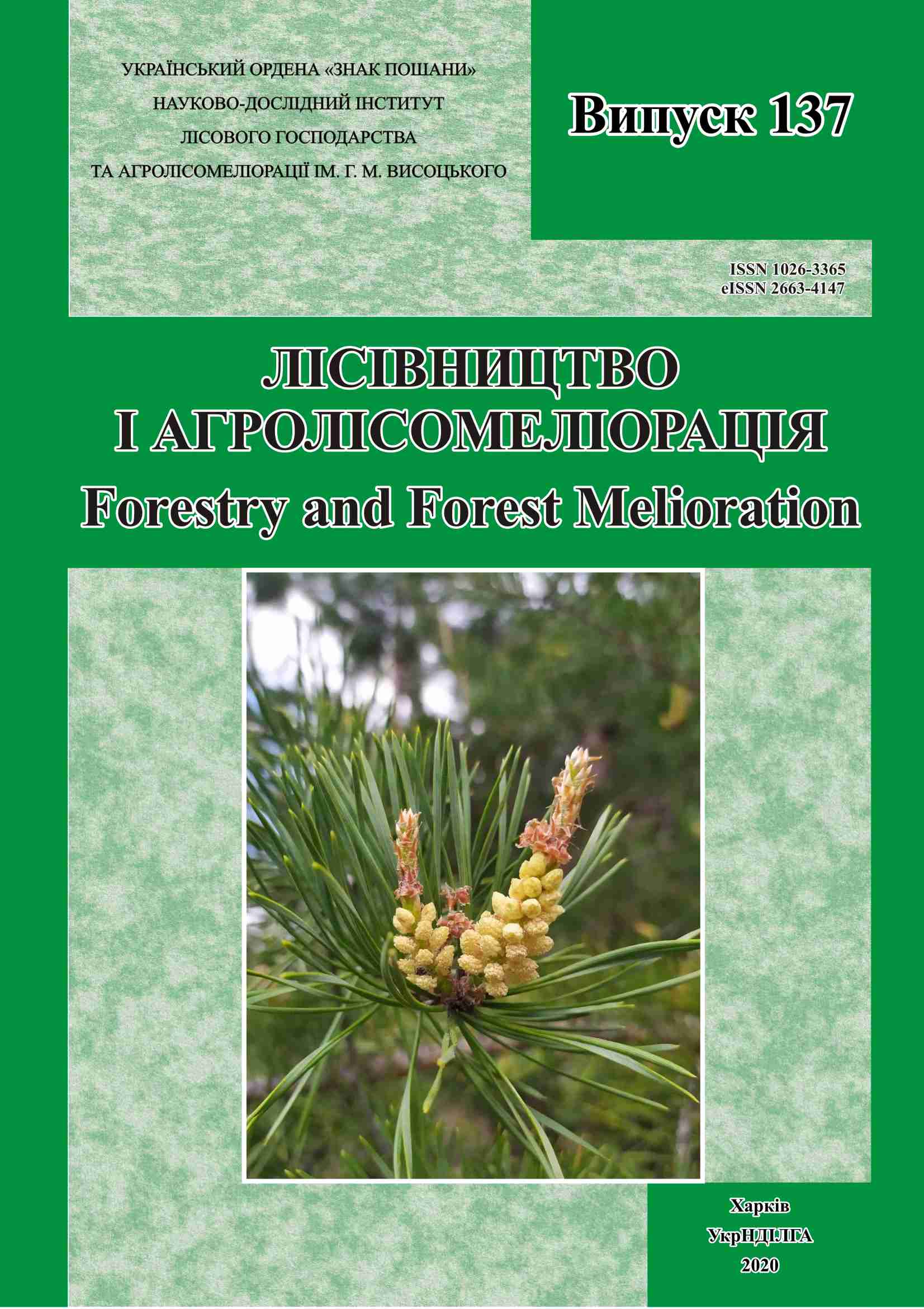Abstract
Introduction
Heterobasidion annosum s. l. affects pine stands and causes a significant loss of wood as well as reduced protective properties of forests. The lack of objective criteria to assess the degree of resistance of Scots pine to this pathogen encourages the search for markers of trees’ resistance to this disease. An important role in ensuring the resistance of pine to adverse environmental factors, including the annosum root rot, according to many scientists, is played by late wood in the radial growth of trees. The comprehensive assessment of the offspring of clonal seed orchards (CSOs), taking into account the resistance to the annosum root rot, will identify the most promising among them to cultivate in local conditions.
Materials and Methods
The study was conducted in variety tests of Scots pine established in Guty State Forest Enterprise in Kharkiv Region, Ukraine, where the CSO offspring from Kharkiv, Kyiv and Volyn regions grow. The offspring grown from seeds harvested in Guty State Forest Enterprise were used as a local control (Guty-control) for all of the variants, and those grown from seeds harvested in the state forest enterprises of the corresponding regions were used as a regional control (Kharkiv-control, Kyiv-control, Volyn-control). The height, diameter, health condition, selection category of trees in variants were determined. The specificities in late and early wood growth were analysed using annual tree rings from cores selected. The width of the layers of late and early wood in radial increment was measured and their proportions were calculated. The prospects of using the seeds of CSO offspring in local environment of Kharkiv Region were assessed by means of the scale of the complex assessment presented in the variety testing method (total points 5–20) and with the addition of the annosum root rot resistance (total points 5–25), which used the proportion of late wood in radial tree growth.
Results
Comprehensive assessment of the variants on a scale from the method of variety testing of forest species in terms of productivity and condition showed that in the study site, all the offspring were relatively promising (total points 10–15). ‘Kyivsky-3’ and ‘Pryhylkivsky-2’ variants were the best (total points 15). The variants ‘Prykhilkivsky-1’ and ‘Geographical’ (total points 14) were slightly behind them. To assess the potential of using seeds from CSO in the sites vulnerable to the annosum root rot, we considered additional indicator of the resistance, namely the late wood proportion in radial growth. The results of the scoring indicate that the best for afforestation in such sites is candidates for synthetic population varieties from Kyiv Region ‘Kyivsky-3’ (total points 19). Variants from Kharkiv Region, which were identified as promising in terms of productivity and health, were slightly behind it (total points 18).
Conclusions
The use of the late wood proportion in the radial growth for a comprehensive assessment of Scots pine allowed identifying the differentiation between the variants for resistance to the annosum root rot and establishing the most promising to grow in Kharkiv region. How effective the use of the proportion of late wood layers as a marker of resistance requires a further confirmation. The results of the comprehensive assessment indicate the feasibility of using seeds from clonal seed orchards to establish sustainable and productive forests in the forest-steppe zone of Kharkiv Region.
4 Figs., 2 Tables, 16 Refs.
Key words: Pinus sylvestrys L., annosusm root rot, Heterobasidion annosum s. l., varieties-population candidates, breeding traits, complex assessment, radial growth, clonal seed orchard offspring.

This work is licensed under a Creative Commons Attribution 4.0 International License.
